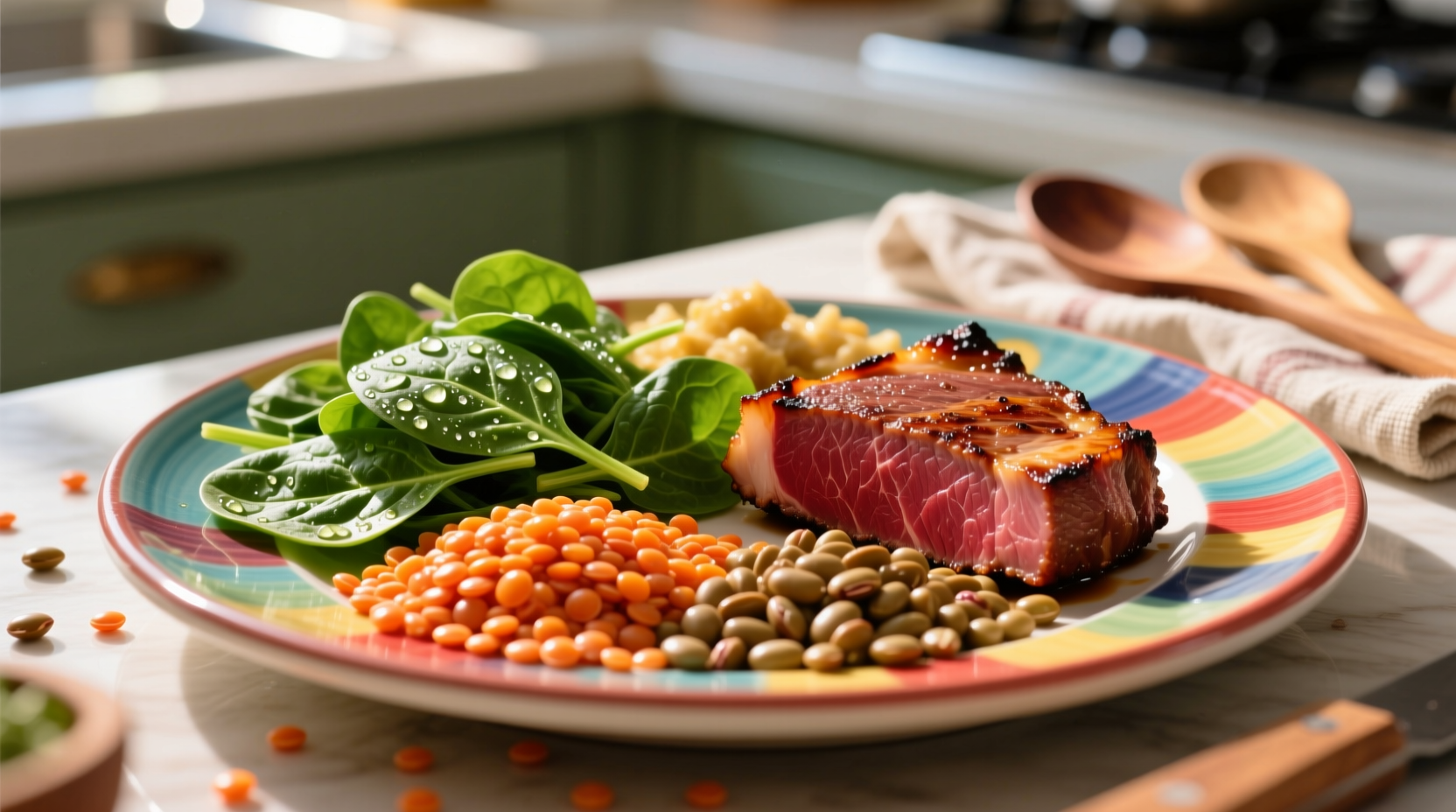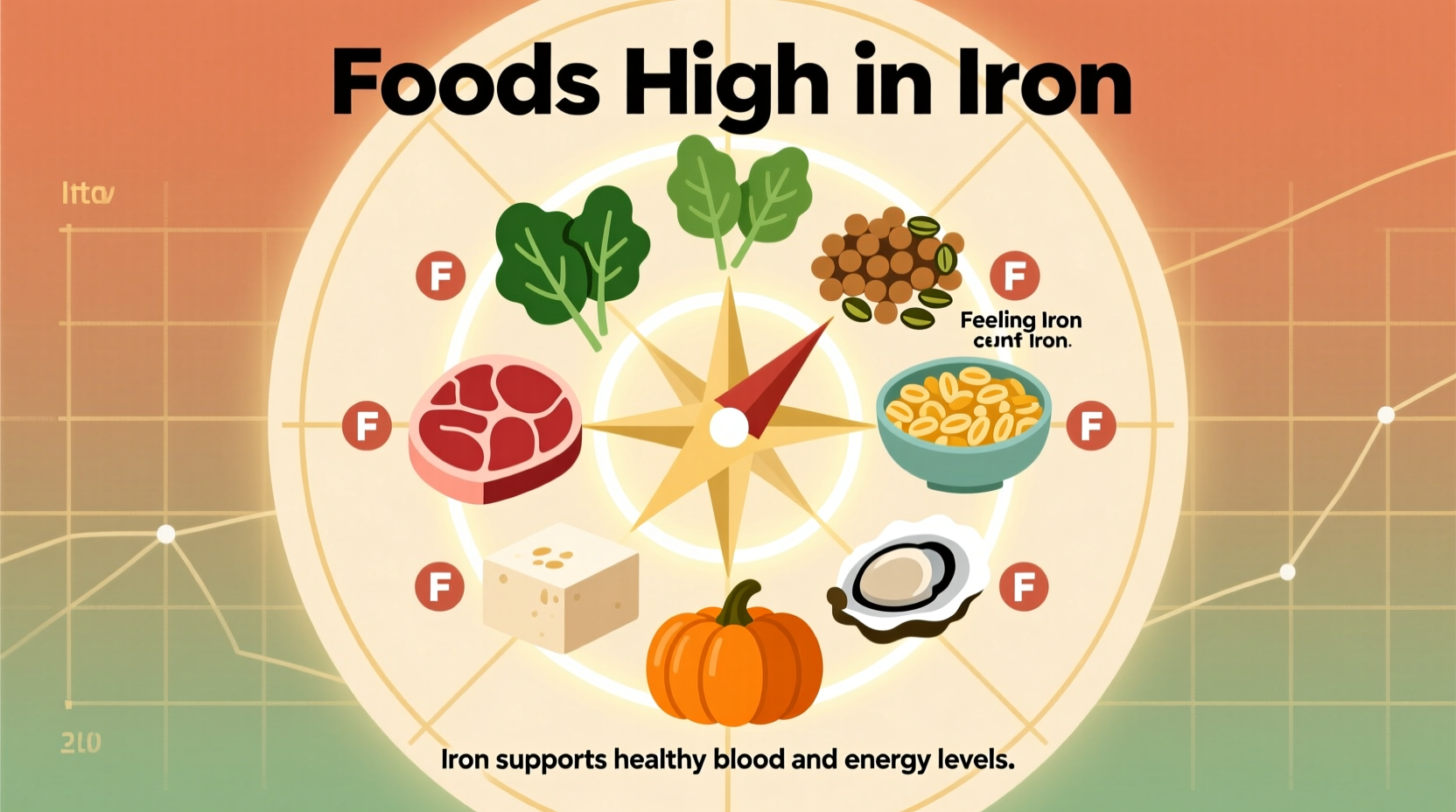If you're searching for what food has iron, the top natural sources include red meat, organ meats like liver, shellfish (especially oysters), legumes, spinach, and fortified cereals. A single 3-ounce serving of beef liver provides 5.2 mg of iron (29% of daily value), while a cup of cooked lentils offers 6.6 mg (37% of daily value). Understanding which foods contain the most bioavailable iron and how to maximize absorption is crucial for maintaining healthy iron levels.
Iron deficiency affects over 1.6 billion people worldwide, making it the most common nutritional deficiency globally according to the World Health Organization. Whether you're managing anemia, following a plant-based diet, or simply optimizing your nutrition, knowing exactly which foods deliver the most usable iron can significantly impact your health. This guide cuts through the confusion with science-backed information you can trust.
Why Iron Matters More Than You Think
Iron plays a critical role in oxygen transport through hemoglobin, energy metabolism, and immune function. When your body lacks sufficient iron, you may experience fatigue, weakness, impaired cognitive function, and decreased immunity. The National Institutes of Health reports that women of childbearing age, pregnant individuals, infants, and people following vegetarian or vegan diets face the highest risk of iron deficiency.
| Food Source | Iron Content (per serving) | % Daily Value | Type of Iron |
|---|---|---|---|
| Beef liver (3 oz) | 5.2 mg | 29% | Heme |
| Oysters (6 medium) | 4.5 mg | 25% | Heme |
| Lentils (1 cup cooked) | 6.6 mg | 37% | Non-heme |
| Spinach (1 cup cooked) | 6.4 mg | 36% | Non-heme |
| Fortified breakfast cereal (1 serving) | 18 mg | 100% | Non-heme |
Source: USDA FoodData Central, 2023 release. Values represent typical iron content per standard serving size.

Heme vs. Non-Heme Iron: The Absorption Difference That Matters
Not all dietary iron is created equal. Understanding the two types can dramatically improve how effectively your body utilizes iron from food:
- Heme iron (from animal sources) has 15-35% absorption rate
- Non-heme iron (from plant sources) has 2-20% absorption rate
According to research published in the American Journal of Clinical Nutrition, heme iron absorption remains relatively consistent regardless of other dietary factors, while non-heme iron absorption can vary significantly based on what you eat alongside it. This explains why vegetarians and vegans typically need to consume 1.8 times more iron than meat-eaters to meet their requirements.
Maximizing Iron Absorption: Practical Food Pairing Strategies
Boost your iron uptake with these evidence-based pairing techniques that work with your body's natural processes:
Vitamin C Power Combos
Consuming vitamin C-rich foods with iron sources can increase non-heme iron absorption by up to 67%, according to a NIH Office of Dietary Supplements review. Try these effective combinations:
- Spinach salad with lemon vinaigrette and bell peppers
- Lentil soup with tomatoes and citrus zest
- Fortified cereal with strawberries or orange slices
Avoid These Iron Blockers
Timing matters when consuming these common iron inhibitors:
- Coffee and tea (tannins): Wait 1-2 hours after iron-rich meals
- Calcium supplements: Take separately from iron sources
- High-fiber bran: Consume at different meals than iron-rich foods
Dietary Considerations for Special Needs
Your iron requirements vary significantly based on life stage and dietary patterns. Understanding these context boundaries helps you tailor your approach:
For Vegetarians and Vegans
Plant-based diets require strategic planning to meet iron needs. The Academy of Nutrition and Dietetics recommends:
- Consuming a variety of legumes, tofu, tempeh, and fortified foods
- Using cast-iron cookware to increase iron content in foods
- Soaking and sprouting grains and legumes to reduce phytates
During Pregnancy
Pregnant individuals need nearly double their pre-pregnancy iron intake (27 mg daily). Focus on:
- Lean red meat 2-3 times weekly
- Combining plant iron sources with vitamin C
- Discussing supplementation needs with your healthcare provider
Putting It All Together: Your Iron-Rich Eating Plan
Implement these practical strategies to build an iron-supportive diet without drastic changes to your eating habits:
Simple Daily Swaps
- Replace morning toast with iron-fortified cereal
- Choose lentil pasta instead of regular pasta
- Add pumpkin seeds to salads and yogurt
Sample One-Day Meal Plan
- Breakfast: Fortified oatmeal with dried apricots and almonds (7.2 mg iron)
- Lunch: Spinach salad with chickpeas, red bell peppers, and citrus dressing (5.8 mg iron)
- Dinner: Grass-fed beef stir-fry with broccoli and sesame seeds (4.3 mg iron)
When Food Isn't Enough: Understanding Supplementation
While food sources should be your primary iron source, supplementation may be necessary in certain cases. The American Society of Hematology notes that oral iron supplements typically contain 30-60 mg of elemental iron, but absorption rates vary widely. Always consult with a healthcare provider before starting iron supplements, as excess iron can cause serious health complications.











 浙公网安备
33010002000092号
浙公网安备
33010002000092号 浙B2-20120091-4
浙B2-20120091-4